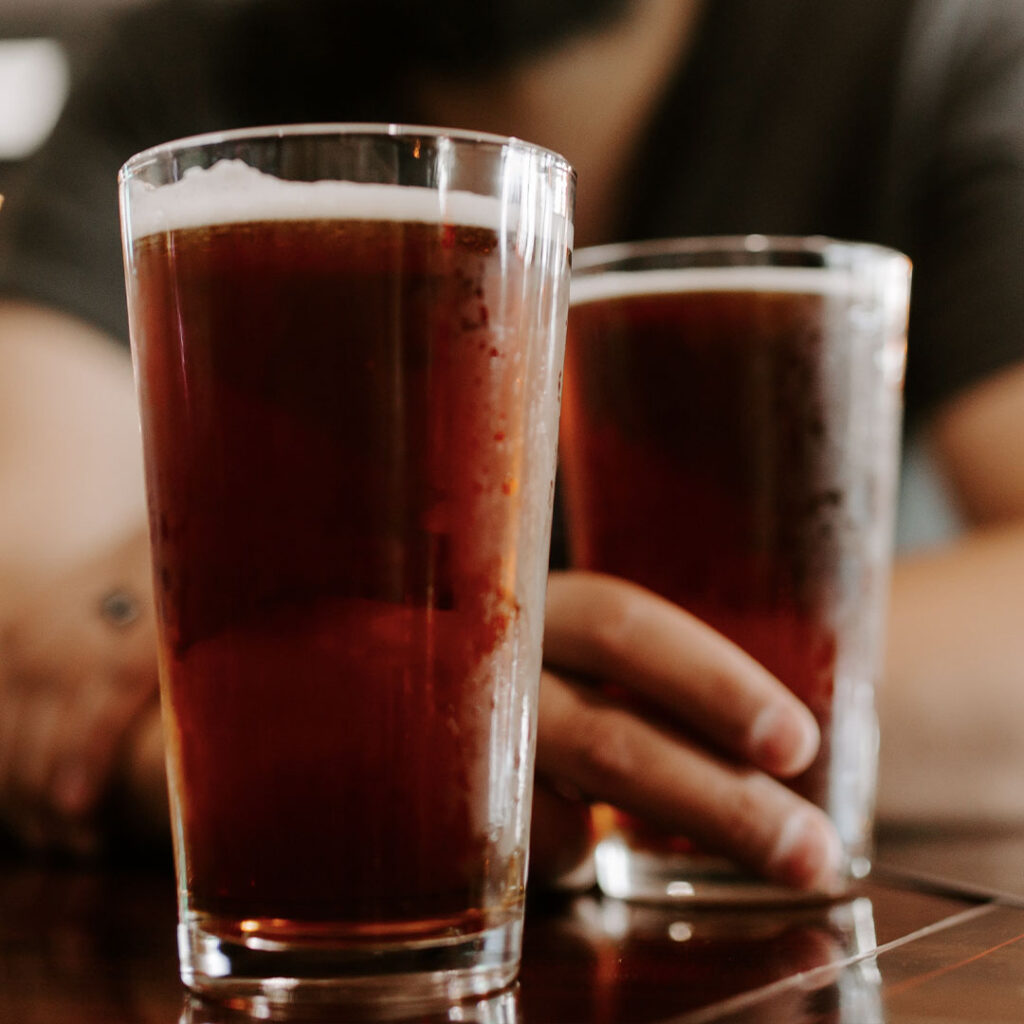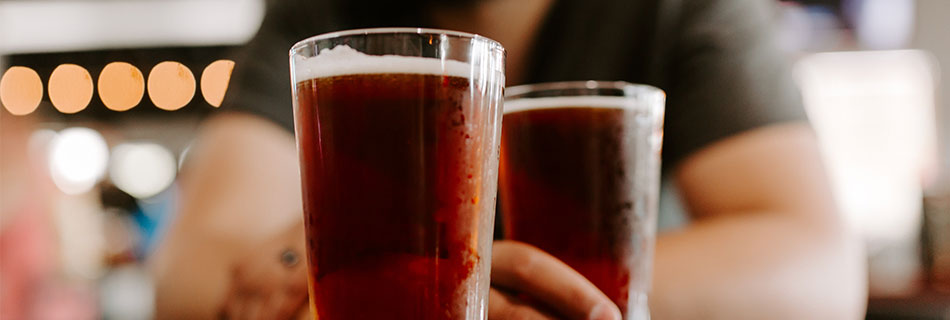Altbier is a top-fermented, amber, lagered beer, traditionally brewed in Westphalia, mainly in Düsseldorf. The name “Alt” (meaning “old”) refers to the historical brewing method when ale yeast dominated. Check out our Altbier recipe.
However, as bottom-fermenting yeasts spread across the brewing scene in the 1800s, brewers needed a way to distinguish this style. Unlike modern lagers, Altbier blends ale and lager techniques. Specifically, it uses ale yeast but ferments and conditions at cooler temperatures. As a result, it develops a cleaner, crisper taste. Moreover, it strikes a perfect balance between malt and hops, offering moderate fruity esters along with subtle floral or spicy aromas.

| Original gravity | 1044 – 1052 |
| Final gravity | 1008 – 1014 |
| Colour EBC | 22 – 33 |
| Colour Lovibond | 9 – 13 |
| IBU | 25 – 50 |
| ABV % | 4.3 – 5.5 |
Grain bill
| Variety | Quantity | Quantity | Colour EBC | Colour ºL | Ratio |
|---|---|---|---|---|---|
| Swaen Pilsner | 4 kg | 8.8 lb | 4 | 1.5 | 73% |
| Swaen Munich Dark | 1 kg | 2.2 lb | 20 | 7.5 | 18% |
| Gold Swaen Brown Light | 0.3 kg | 0.66 lb | 180 | 68 | 6% |
| Black Swaen Chocolate B | 0.15 kg | 0.33 lb | 900 | 340 | 3% |
When it comes to the grain bill, an Altbier recipe typically features German-style base malts – mainly Pilsner, sometimes with a touch of Munich. In some sub-styles, brewers use cara malts to enhance colour, whereas the traditional Düsseldorf version incorporates chocolate or black malt. Consequently, this recipe brings together both approaches to create a well-rounded profile. Additionally, you can add wheat or roasted wheat for extra complexity.
Traditionally, brewers rely on a decoction mash to bring out deeper malt flavours. However, if you prefer a simpler method, you can follow a mash schedule of 53-62-71 °C (127-144-160 °F) for 10-30-30 minutes. This alternative still produces excellent results while being more manageable for homebrewers.
Hops
| Variety | Quantity | Quantity | Duration | Alpha acid | IBU |
|---|---|---|---|---|---|
| Spalt | 30 g | 1.1 oz | 60 min. | 5% | 17 |
| Spalt | 30 g | 1.1 oz | 30 min. | 5% | 13 |
As for hops, the aroma ranges from moderate to low, with spicy, floral, or herbal notes. Traditionally, brewers use Spalt, but if that is not available, you can easily substitute it with other Saaz-like hops. The hopping schedule is quite straightforward—simply add equal amounts at both 60 and 30 minutes. This method ensures a well-balanced hop character without overwhelming the malt backbone.
Yeast
To achieve the right character for this Altbier recipe, it is essential to choose a clean, highly attenuative ale yeast. Ideally, you should ferment at the cooler end of the ale range (15-20 °C / 59-68 °F) to maintain its crisp profile. After primary fermentation, the beer must be conditioned at lager temperatures (~10 °C / 50 °F) for a few weeks. This extra step is crucial, as it allows the flavours to fully develop, resulting in the smooth, balanced taste that defines a great Altbier.
Dry examples: Fermentis Safale US05 or Mangrove Jack M54 Californian Lager.
Liquid examples: Whitelabs WLP036 Dusseldorf Alt or Wyeast 1007 German Ale.
Results
| Batch size | 23 L / 6 gallon |
| Efficiency | 71% |
| Original gravity | 1049 |
| Final gravity | 1010 |
| Colour EBC | 32 |
| Colour Lovibond | 12 |
| IBU | 30 |
| ABV % | 5.1 |
| Carbonation | 2.5 |
| pH | 5.25 |
Taste profile
A clean and crispy, rich malt character.
Food pairing
Sausage, grilled fish, roast pork.


